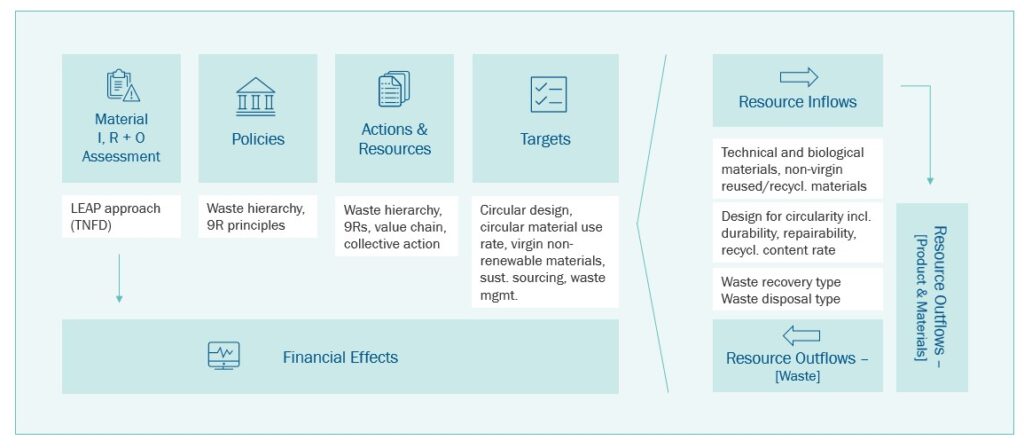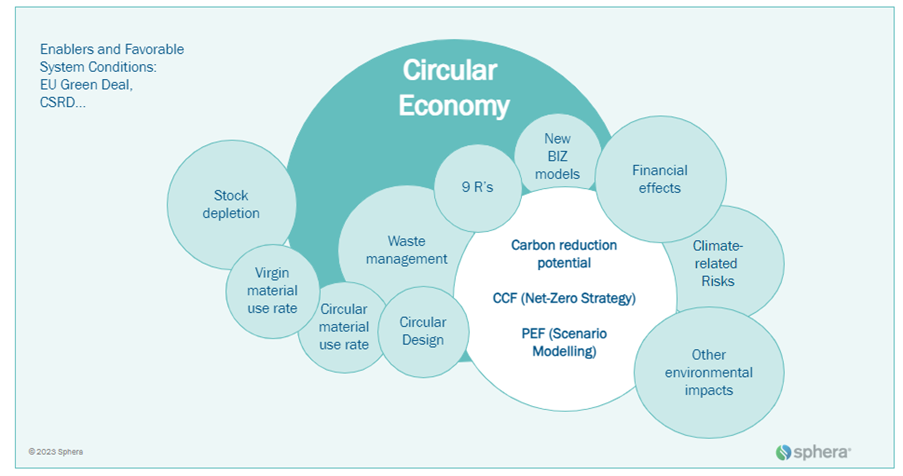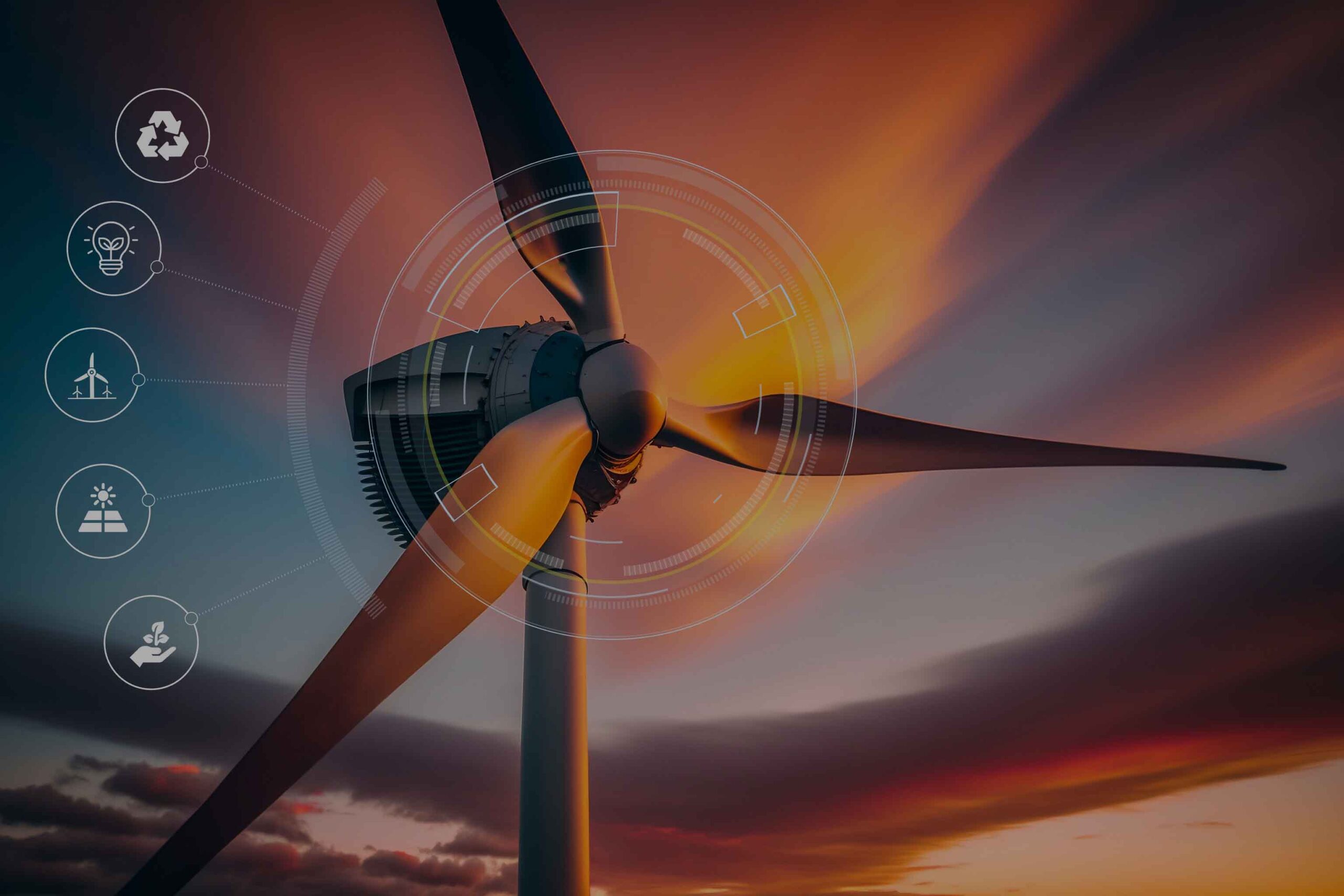The circular economy model has been around for decades; it is based on the concept of extended producer responsibility that emerged in the 1990s. With the introduction of key initiatives under the European Green Deal, interest in the concept has grown significantly. In particular, the EU Taxonomy and the European Corporate Sustainability Reporting Directive (CSRD) compel companies to get serious about circularity. And because some non-EU companies fall within the scope of the CSRD, many businesses based outside the EU will need to do the same.
Going forward, the CSRD will provide a streamlined framework for businesses to follow. Large companies will need to report sustainability information under the European Sustainability Reporting Standards (ESRS) beginning in 2024. Specifically, with ESRS E5 on Resource Use and Circular Economy, circularity becomes a mandatory reporting requirement for many enterprises, and it raises the question: Is your circular economy strategy ready for the CSRD? Read on to learn more about the CSRD, the ESRS and the reporting requirements that are related to the circular economy.
Which Companies Must Report on Their Circular Economy Strategy?
Within the regulatory context of the CSRD, a company’s mandatory double materiality assessment decides which of the [Draft] ESRS Topical Standards are material and should be reported on. As such, if the topic of “Resource Use and Circular Economy” is evaluated as being material, then yes, the company will need to report on the topic.
Regardless of whether companies need to report on Resource Use and Circular Economy, they must disclose the information required by ESRS 2 General Disclosures. These and other requirements were discussed in this recent Sphera Webinar: ESG Reporting Evolution – Getting Ready for CSRD.
Understanding ESRS E5 Requirements
Note that all of the ESRS are still to be adopted by the Commission by means of delegated acts. Yet, a draft of ESRS E5 reporting requirements was published in 2022. Companies are required to set up and describe a process to identify and assess material resource use and circular economy-related impacts, risks and opportunities (IRO) under ESRS 2 IRO-1. Further requirements include:
E5-1: Policies related to resource use and circular economy.
E5-2: Actions and resources related to resource use and circular economy.
E5-3: Targets related to resource use and circular economy.
E5-4: Resource inflows (products—including packaging—and materials, property, plant and equipment).
E5-5: Resource outflows (product and materials, waste).
E5-6: Anticipated financial effects from material resource use and circular economy-related impacts, risks and opportunities.
The good news is that the ESRS E5 refers to existing EU concepts such as the “waste hierarchy” (a principle defined by Directive 2008/98/EC) or the “9 R’s” (refuse, rethink, reduce, reuse, repair, refurbish, remanufacture, repurpose, recycle and recover), and does not fully reinvent the wheel. Still, quite a holistic picture is drawn, which may require many companies to refine their existing circular economy strategies.

Source: Sphera – Strategic Advisory Services (2023)
Reporting on Circular Economy Aspects: What Has Changed
In the past, companies were basically able to report on any circular economy aspects they chose. Indicators such as the Material Circularity Indicator (MCI) were helpful tools, allowing companies to operationalize the circular economy concept and to measure it over time. However, the CSRD is introducing a new set of reporting standards and requirements.
The level of detail required for setting targets, along with the metrics to be reported on, indicate that the EU truly aims for greater standardization. This serves to increase the transparency, comparability and reliability of sustainability reporting while reducing the possibility for greenwashing. Companies can no longer be selective about the circular economy aspects they want to include in their strategies. As the circular economy concept is being touched from all angles, a holistic strategic approach is needed.
Advantages of a Circular Economy
Businesses that embrace circular design principles, which aim to eliminate waste from the start, can circulate products and materials at their highest value. Implementing effective waste reduction and management strategies, particularly when coupled with renewable energy, allows companies to minimize waste and pollution. This, in turn, improves resource efficiency by reducing the need for virgin materials. It also addresses the financial and environmental impacts associated with depletion of stocks or resources.
By promoting eco-design and circular material use and regenerating nature, the circular economy supports carbon reduction and net-zero strategies. Closed-loop systems also contribute to more sustainable supply chains, extending a company’s environmental stewardship beyond its immediate operations. Such measures serve to mitigate climate-related risks and the associated financial effects. The wider interconnections are depicted in the following graph:

Source: Sphera – Strategic Advisory Services (2023)
Additionally, circular economy strategies bring along opportunities for innovation, cost savings and improved brand reputation. Material recycling and ethical sourcing demonstrate corporate social responsibility and increase stakeholder engagement. Significantly, such strategies contribute to the transition toward more sustainable business practices and a thriving global economy. Not least, by following the ESRS E5 reporting requirements, a company will make sure that it complies with the new legal framework and avoid any fines.
How Sphera Can Support You
In addition to offering general CSRD guidance and implementation support, our experts are happy to give your circular economy strategy a boost and make sure you are ready for CSRD reporting. We can help you understand CSRD-specific criteria. Our consultants will support you in conducting an in-depth gap assessment, product life cycle assessment (LCA) or environmental impact assessment. With our extensive sector-specific expertise, we provide holistic strategy creation and business model support. Contact us for more information.
Adopting Circular Economy Practices and Principles
In summary, the circular economy is not just a passing trend; it is a transformative pathway toward a sustainable future. The time when businesses could freestyle their circular economy programs and include only parts of circularity aspects in their strategies has passed. The ESRS E5 reporting principles are here to stay.
By integrating these new principles and adopting circular practices as described in detail by ESRS E5, companies can take advantage of a multitude of business opportunities. Embracing the circular economy offers immense potential for economic growth decoupled from the exploitation of natural resources.

